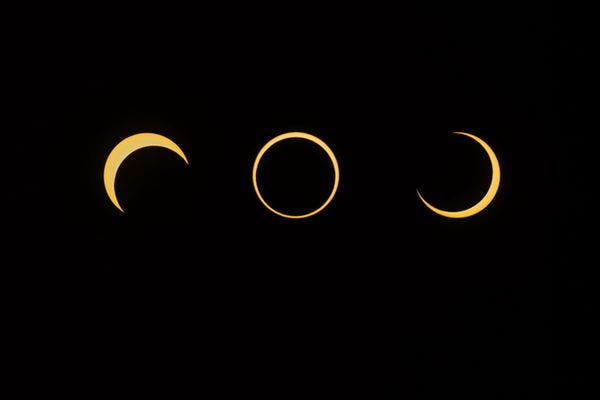This Thursday marks a special occasion for star gazers once with the setting of the annular eclipse, an event which Earth, the moon and the sun align such that only a ring of light around the moon will become visible. Unfortunately, only those living in the Pacific area will be able to see it in person. Luckily, there’s a live stream for those of us in the wrong hemisphere.
“It is always astonishing to see the moon apparently cut bites out of the sun,” said eclipse expert Jay Pasachoff, Field Memorial Professor at Williams College in Massachusetts.
“And it is a wonder of modern science and mathematics that you can travel halfway around the world, arriving on a normal day with blue sky, but then, on schedule, the lunar silhouette breaks up the sunlight.”
There are two types of eclipses. There’s the total eclipse where the moon fully blocks the sun and the annular eclipse where the apparent diameter of the moon only partially covers the sun’s disk, leaving a ring-like spectrum of light. Visually, the effect is purely stunning and most people find it akin to a ring of fire. Annular eclipses occur during the moon’s most farthest away points from Earth, making it seem smaller than usual. Obviously, this is because the moon’s orbit around Earth resembles an oval.
If you’re in Australia or somewhere in Pacific islands at the moment, be sure not to miss this incredible spectacle. Here’s a list with the exact timing the annular eclipse will surface for each of the moon’s passing through the Pacific area. Be sure to equip your telescope with proper filters or put on some special eye wear in order to prevent damage to your eyes. You can watch the even live on this stream setup by SLOOH.
This isn’t the only solar eclipse of the year. On Nov. 3, a rare annular eclipse that transitions into a total eclipse — called a hybrid eclipse — will be visible in the northern Atlantic Ocean and into equatorial Africa.
Photo courtesy of National Geographic.










